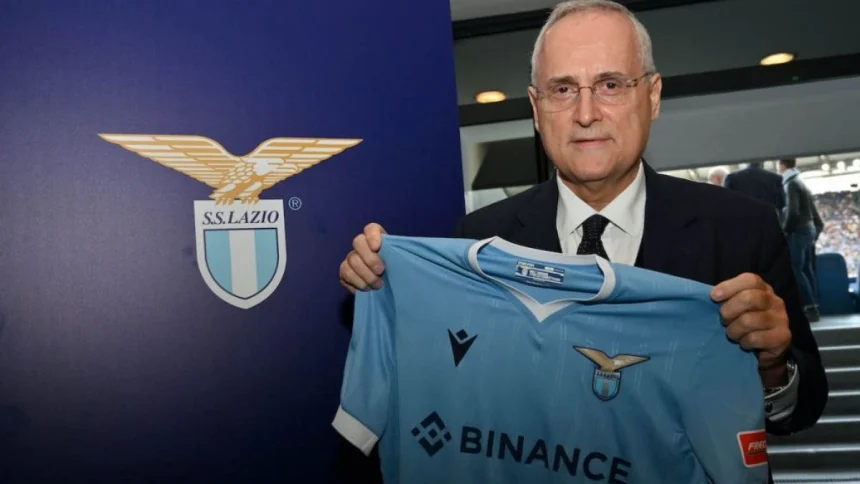How Cryptocurrency Sponsorships Are Reshaping Football Club Finances
Cryptocurrency has become one of the most influential new forces in global football. What began as small logo placements and experimental partnerships has turned into a major stream of revenue for clubs in elite leagues.
The football industry has always been fast to adopt new financial trends, and crypto is no exception. Clubs now view digital-asset companies as long-term commercial partners rather than short-term marketing experiments.
This rise of crypto sponsorships did not happen by accident. It grew alongside the global expansion of digital-asset markets and the increasing demand from these companies to target huge sporting audiences.
Football offers the largest global reach in sport, and crypto brands saw an opportunity to position themselves in front of billions of fans. At the same time, clubs saw new commercial income to strengthen their balance sheets. This combination changed the financial landscape of football in only a few seasons.
The Financial Scale Behind Crypto Sponsorships
To understand why crypto partnerships now shape football finances, it is important to look at verified industry numbers. In the 2024/25 season, global spending by crypto and digital-asset companies in sports reached US $565 million. Football alone accounted for 59 percent of all new crypto sponsorship deals. This shows how strongly the sport attracts digital-asset companies and how quickly they have become key commercial players.
There is more evidence of football’s leading role. Another independent report for the same season found that football generated 43 percent of all crypto and digital-asset sponsorship value, amounting to over US $243 million paid directly to clubs and sporting organisations. This confirms that the biggest share of crypto sponsorship money is now entering football rather than other sports.
The financial impact is especially visible in Europe. In the Premier League alone, crypto companies spent close to £130 million on sponsorships for the 2024/25 season. That level of investment places digital-asset brands among the most valuable partners in the league. A separate analysis reported that 14 out of 20 Premier League clubs now have a sponsorship or commercial partnership with a crypto company. This makes digital-asset firms one of the most common sponsor types in the league.
These numbers show a clear trend. Crypto companies are not simply experimenting. They are placing long-term financial commitments behind football teams, and those commitments form a growing part of club revenue.
Why Crypto Firms Target Football Clubs
Crypto companies invest in football for several reasons. The biggest is global reach. Football delivers enormous worldwide visibility across television, digital platforms and live matches. Crypto brands use this exposure to gain trust, attract customers and build recognition in markets where they want to expand.
Another reason is audience demographic. Football fans are typically engaged, active on digital platforms and open to new technology. This makes them ideal targets for companies promoting digital wallets, exchanges or blockchain services. Sponsorship deals give crypto brands the chance to introduce their products to millions of potential users.
There is also a branding advantage. Clubs carry emotional loyalty. When a crypto brand appears on a shirt, training kit or stadium board, it gains a sense of legitimacy. For a fast-moving and sometimes misunderstood industry like crypto, legitimacy is crucial. This is one of the main reasons crypto companies spend large amounts on long-term football partnerships.
The Benefits Football Clubs Gain From Crypto Deals
The financial benefits for football clubs are clear. Sponsorship revenue helps support transfer budgets, wage structures and infrastructure improvements. For some clubs, crypto partnerships arrive at a time when traditional revenue streams are under pressure. Broadcast deals are stabilising, matchday revenue is unpredictable and global economic conditions affect corporate spending. Crypto sponsorships provide fresh income at a time when clubs are seeking new ways to strengthen their finances.
Another advantage is diversification. Football clubs have become dependent on a handful of industries such as airlines, banks, betting companies and automotive brands. Crypto partnerships offer a new group of sponsors, which reduces reliance on older sectors. This is important when regulations or market conditions affect traditional sponsorship markets.
Clubs also benefit from digital-focused collaborations. Crypto partners often bring expertise in blockchain ticketing, digital fan engagement and token-based experiences. While some of these ideas are experimental, they help clubs modernise their commercial strategies and reach younger audiences.
The Rise, Dip and Return of Crypto Partnerships
Crypto sponsorships have not grown in a straight line. Between 2021 and 2024, the number of sponsorship deals in sports moved with market conditions. One verified study recorded 92 crypto sponsorships in sports over those years, with football specifically seeing 9 deals in 2021, 10 in 2022, only 3 in 2023, and then 10 again in 2024. This decline in 2023 reflects the global “crypto winter,” where several major crypto companies faced losses or collapsed.
Despite this dip, the return of sponsorships in 2024 shows that the crypto industry still views football as a priority. The overall spending growth into 2024/25 supports this. Even with market volatility, crypto companies continue to see football as the best way to reach global audiences.
Risks Football Clubs Face With Crypto Partnerships
While crypto sponsorships bring new revenue, they also carry risks. Market downturns can affect the financial stability of sponsors. The collapse of major crypto companies in 2022 and 2023 showed how quickly conditions can change. When a sponsor fails, clubs can lose income, disrupt shirt plans or get pulled into legal disputes.
Another risk is regulatory pressure. Many regions are introducing rules around crypto advertising. Clubs must ensure that sponsorship deals comply with national laws and avoid misleading fans. The rapid growth of the crypto sector also makes it difficult to predict long-term stability.
There is also fan reaction. Some supporters remain cautious about crypto companies due to volatility. This means clubs must balance commercial interests with maintaining trust and transparency with their fanbases.
Why Crypto Sponsorships Still Appeal to Clubs
Even with these risks, clubs continue to sign crypto sponsors. The reasons are straightforward: the money is significant, the partnerships are global and the technology aligns with modern digital strategies. For many clubs, crypto sponsorships offer a financial level that traditional partners cannot currently match.
Crypto firms also tend to invest in multi-year contracts, giving clubs long-term financial security. This provides predictable revenue and allows clubs to plan their budgets more confidently. In a competitive environment where financial fair play rules limit spending, secure commercial income becomes even more important.
How Crypto Sponsorships Are Likely to Evolve
The future of crypto sponsorships will depend on market stability, regulation and the continued global growth of digital-asset technology. However, the financial numbers show that crypto is now deeply rooted in football’s commercial landscape.
One likely direction is greater focus on digital fan engagement. Blockchain-based ticketing, membership tokens and club-owned digital platforms could become more common. These tools could also offer new revenue streams for clubs and create closer links with global fans.
Another shift may involve higher standards of due diligence. After market crashes, clubs are expected to carefully check the financial health and sustainability of crypto partners. This will make partnerships more stable and reduce risk for both sides.
The final trend is regional expansion. Crypto sponsorships in football are strong in Europe, but clubs in Asia, North America and South America are increasingly attracting digital-asset brands. As football grows globally, crypto companies will look beyond traditional markets to gain wider audiences.
FAQs
Q1. Why are crypto companies investing so much in football?
A. Because football offers massive global visibility and access to engaged audiences that match the target market for digital-asset products.
Q2. How much money do crypto companies spend on football sponsorships?
A. Verified data shows football received more than US $243 million in crypto sponsorship value in the 2024/25 season.
Q3. Are Premier League clubs heavily involved with crypto sponsors?
A. Yes. Fourteen of the twenty Premier League clubs have at least one crypto partnership.
Q4. What risks come with crypto sponsorship deals?
A. Market volatility, sponsor instability and regulatory issues can affect these partnerships.
Q5. Will crypto sponsorships remain part of football?
A. Yes. Despite market challenges, spending continues to grow and crypto remains one of football’s major commercial sectors.
Also Read- Cristiano Ronaldo Receives First International Red Card And Faces World Cup Suspension Risk





















